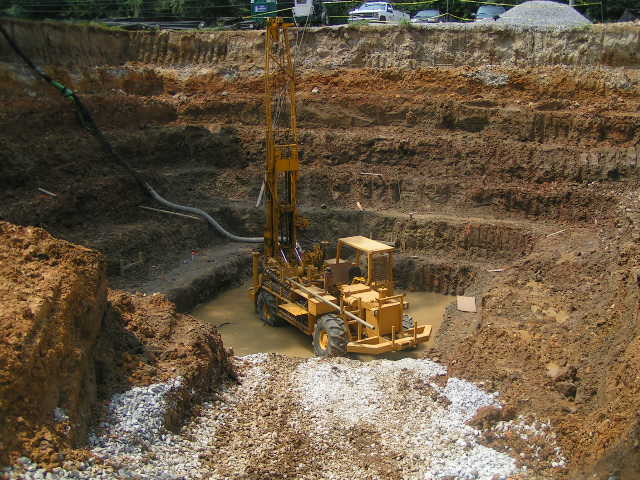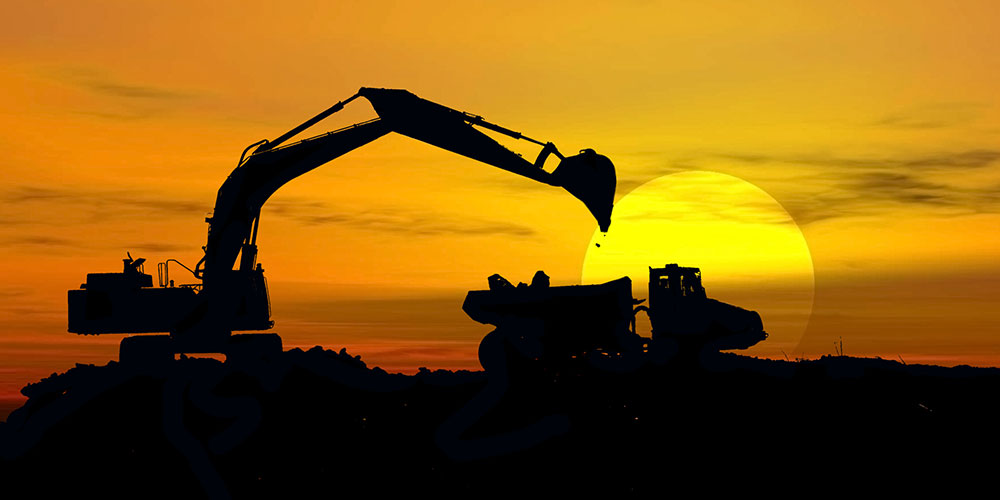Geotechnical Geologist Services for Accurate Soil and Rock Evaluation
Wiki Article
Exactly How Consulting Engineers Enhance Geotechnical Design Projects: Insights Into Their Competence, Methodologies, and Collaborative Approaches
Consulting engineers are pivotal in enhancing geotechnical engineering jobs, applying their specialized expertise to browse the complexities of subsurface problems. Their methodologies include a series of website investigation methods, including Standard Infiltration Examinations (SPT) and Cone Infiltration Tests (CPT), which inform vital decisions throughout the design and building and construction stages. Their joint techniques foster communication amongst diverse task stakeholders, inevitably shaping the job's trajectory. As we analyze the complex functions these specialists play, it ends up being clear that their payments expand beyond technical experience, motivating a better look at the implications for task success.Function of Consulting Engineers
The expertise of getting in touch with engineers in geotechnical engineering is basic to the successful implementation of construction tasks. These professionals play an essential duty in evaluating soil and rock residential properties, which are important elements affecting design and construction choices. By conducting comprehensive website investigations, speaking with engineers accumulate vital data that informs the design procedure, ensuring jobs are improved stable and suitable ground.Consulting designers likewise supply invaluable understandings into risk administration (geotechnical geologist). They recognize prospective geotechnical hazards, such as landslides, dirt liquefaction, and settlement issues, enabling stakeholders to implement effective mitigation strategies. Their know-how aids in optimizing structure layouts, which can cause significant price financial savings and improved security
Additionally, speaking with engineers serve as a crucial link in between job owners, engineers, and service providers. Their capability to convert intricate geotechnical data right into workable recommendations cultivates partnership and facilitates notified decision-making throughout the job lifecycle. This multidisciplinary approach not just enhances job efficiency yet also makes certain conformity with regulatory criteria and best techniques.
Key Techniques in Geotechnical Engineering

One key technique is site examination, which involves conducting area tests and lab evaluations to collect information on subsurface problems. Techniques such as Criterion Infiltration Screening (SPT) and Cone Infiltration Testing (CPT) are extensively used to assess soil stratigraphy and strength. Additionally, geophysical approaches, including seismic and electrical resistivity surveys, supply non-invasive methods to analyze subsurface characteristics.
An additional critical method is numerical modeling, which allows engineers to mimic numerous situations and forecast exactly how soil-structure communications will certainly act under different loading conditions. Limited Aspect Analysis (FEA) is a typical technique employed in this context.
In addition, the layout of foundations, keeping frameworks, and earthworks relies heavily on these methods - geotechnical geologist. By integrating advanced logical tools with field data, speaking with engineers can create tailored services that address details job difficulties, ultimately contributing to the security and security of building jobs
Significance of Dirt Analysis
Soil evaluation acts as a foundational component in geotechnical engineering, supplying vital understandings into the physical and chemical residential properties of soil needed for efficient building and construction planning. Recognizing dirt attributes is crucial for identifying its load-bearing ability, drain actions, and potential for settlement or instability. Thorough soil investigations, consisting of tasting and laboratory testing, assistance identify specifications such as soil kind, dampness content, density, and shear strength.
These evaluations notify the selection of proper construction techniques and materials, inevitably affecting project safety and geotechnical works durability. Cohesive dirts might need various structure layouts contrasted to granular dirts, necessitating tailored engineering services. In addition, dirt evaluation help in recognizing contaminants that could pose dangers to human health and wellness or the atmosphere, permitting the growth of reduction strategies.
Including soil analysis right into the onset of project development helps to minimize unforeseen obstacles, making certain that designers can expect and attend to prospective problems before they rise. By developing a detailed understanding of the site conditions, speaking with engineers can optimize layout performance and decrease costs, thereby boosting the general success of geotechnical engineering tasks.
Joint Techniques in Projects
Effective geotechnical jobs typically rest on joint methods that bring together varied experience from numerous self-controls. Effective cooperation among getting in touch with engineers, rock hounds, ecological researchers, and building professionals is critical for attending to complex obstacles and optimizing task results. By leveraging the distinct skills and knowledge of each staff member, projects can profit from a holistic understanding of the site problems, governing needs, and design restraints.Regular interaction and interdisciplinary conferences promote the sharing of insights and cultivate a culture of synergy. These joint initiatives enable the identification of possible risks early in the job lifecycle, permitting for timely mitigation approaches. Furthermore, integrating responses from stakeholders, including regional neighborhoods and governing agencies, guarantees that all point of views are taken into consideration, enhancing project acceptance and conformity.
Furthermore, the combination of sophisticated modern technologies, such as Geographic Details Equipment (GIS) and Structure Details Modeling (BIM), more boosts collaboration. These devices permit the real-time sharing of data and visualization of geotechnical problems, advertising educated decision-making. Inevitably, a joint strategy not just simplifies project execution yet additionally lays the structure for cutting-edge options to complicated geotechnical engineering challenges.
Effect On Job Results

Consulting designers utilize innovative approaches such as threat assessment and anticipating modeling, which enhance the accuracy of project projections. Their capacity to integrate cutting-edge technologies, like geotechnical instrumentation and data analytics, better refines the style and construction processes. As a result, projects experience improved performance, minimized costs, and reduced hold-ups.
Furthermore, promoting reliable interaction and partnership amongst employee boosts analytic capabilities. When difficulties develop, a united front allows for quick recognition of remedies, avoiding prospective obstacles. Inevitably, the collaborative initiatives of seeking advice from engineers add to better results, making certain that tasks fulfill both governing standards and client expectations.
Conclusion

Report this wiki page